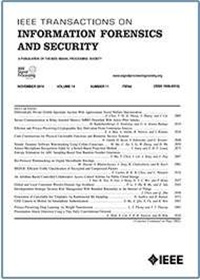VPGFUZZ:脆弱路径引导灰盒模糊
IF 8
1区 计算机科学
Q1 COMPUTER SCIENCE, THEORY & METHODS
IEEE Transactions on Information Forensics and Security
Pub Date : 2025-09-08
DOI:10.1109/TIFS.2025.3607249
引用次数: 0
摘要
模糊测试是一种用于识别软件漏洞的流行技术。现有的模糊测试技术主要侧重于最大化代码覆盖率,以发现潜在的安全问题。然而,仅仅是探索代码的扩展并不一定与漏洞发现的增加相关。此外,现有的fuzzers在代码探索中经常忽略全面的执行路径信息。因此,潜在的漏洞可能会在模糊测试过程中被延迟或忽略。为了解决这个问题,我们提出了VPGFuzz,一个漏洞路径引导的模糊器,它不仅可以探索新的代码,还可以利用已知的漏洞路径知识进行漏洞发现。它采用易受攻击路径识别模型来识别具有潜在易受攻击路径的测试用例。该模型使用来自真实世界漏洞poc(概念证明)的各种执行路径进行训练。基于该模型,VPGFuzz应用了一种探索-利用的种子选择策略来有效地选择测试用例。与传统的种子选择方法(为探索新代码维护单个队列)不同,该策略包括一个单独的队列,用于保留识别为潜在易受攻击的测试用例,从而允许进行更彻底的测试。实验结果表明,VPGFuzz发现了24个以前未知的漏洞,其中18个漏洞标识符来自CVE等第三方组织。我们的评估还显示了VPGFuzz的卓越效率,在大多数程序中,VPGFuzz发现第一个漏洞的速度比流行的fuzzers快1.2到70倍。本文章由计算机程序翻译,如有差异,请以英文原文为准。
VPGFuzz: Vulnerable Path-Guided Greybox Fuzzing
Fuzzing is a prevalent technology for identifying software vulnerabilities. Existing fuzzing techniques predominantly focus on maximizing code coverage to unearth potential security issues. However, the mere expansion of explored code does not necessarily correlate with an increased discovery of vulnerabilities. Additionally, existing fuzzers often neglect comprehensive execution path information in code exploration. Consequently, potential vulnerabilities may be delayed or overlooked in the fuzzing process. To address this, we propose VPGFuzz, a vulnerable path-guided fuzzer that can not only explore new code but also exploit known vulnerability path knowledge for vulnerability discovery. It employs a vulnerable path recognition model to identify test cases with potentially vulnerable paths. This model is trained with various execution paths derived from real-world vulnerability PoCs (Proof of Concepts). Based on this model, VPGFuzz applies an explore-exploit seed selection strategy to effectively choose test cases for testing. Unlike traditional seed selection methods that maintain a single queue for exploring new code, this strategy includes a separate queue for retaining test cases identified as potentially vulnerable, allowing for more thorough testing. Experimental results demonstrate that VPGFuzz discovers 24 previously unknown vulnerabilities, with 18 receiving vulnerability identifiers from third-party organizations such as CVE. Our evaluation also shows VPGFuzz’s superior efficiency by uncovering the first vulnerability approximately 1.2 to 70 times faster than popular fuzzers in most programs.
求助全文
通过发布文献求助,成功后即可免费获取论文全文。
去求助
来源期刊

IEEE Transactions on Information Forensics and Security
工程技术-工程:电子与电气
CiteScore
14.40
自引率
7.40%
发文量
234
审稿时长
6.5 months
期刊介绍:
The IEEE Transactions on Information Forensics and Security covers the sciences, technologies, and applications relating to information forensics, information security, biometrics, surveillance and systems applications that incorporate these features
 求助内容:
求助内容: 应助结果提醒方式:
应助结果提醒方式:


